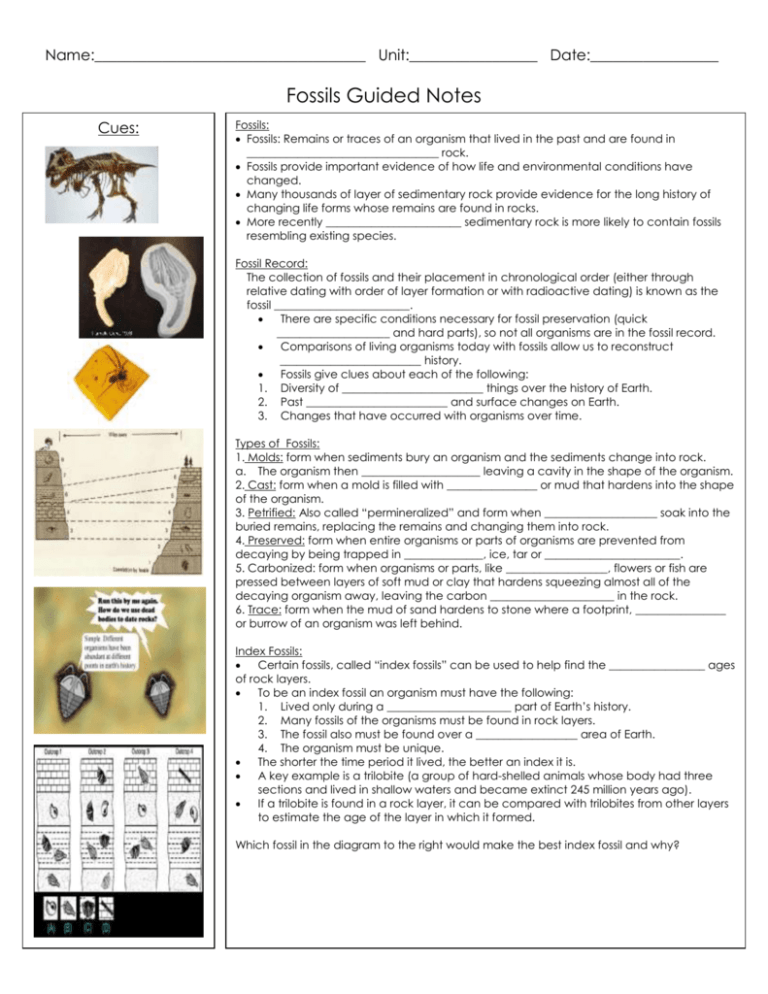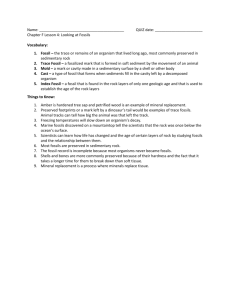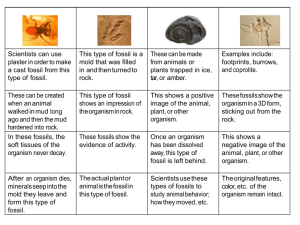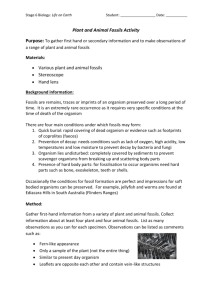Fossils Guided Notes: Types, Formation, and Index Fossils
advertisement

Name:____________________________________ Unit:_________________ Date:_________________ Fossils Guided Notes Fossils: Fossils: Remains or traces of an organism that lived in the past and are found in __________________________________ rock. Fossils provide important evidence of how life and environmental conditions have changed. Many thousands of layer of sedimentary rock provide evidence for the long history of changing life forms whose remains are found in rocks. More recently ________________________ sedimentary rock is more likely to contain fossils resembling existing species. Cues: Fossil Record: The collection of fossils and their placement in chronological order (either through relative dating with order of layer formation or with radioactive dating) is known as the fossil ________________________. There are specific conditions necessary for fossil preservation (quick ____________________ and hard parts), so not all organisms are in the fossil record. Comparisons of living organisms today with fossils allow us to reconstruct _________________________ history. Fossils give clues about each of the following: 1. Diversity of _________________________ things over the history of Earth. 2. Past _________________________ and surface changes on Earth. 3. Changes that have occurred with organisms over time. Types of Fossils: 1. Molds: form when sediments bury an organism and the sediments change into rock. a. The organism then _____________________ leaving a cavity in the shape of the organism. 2. Cast: form when a mold is filled with ________________ or mud that hardens into the shape of the organism. 3. Petrified: Also called “permineralized” and form when ____________________ soak into the buried remains, replacing the remains and changing them into rock. 4. Preserved: form when entire organisms or parts of organisms are prevented from decaying by being trapped in ______________, ice, tar or ________________________. 5. Carbonized: form when organisms or parts, like __________________, flowers or fish are pressed between layers of soft mud or clay that hardens squeezing almost all of the decaying organism away, leaving the carbon ______________________ in the rock. 6. Trace: form when the mud of sand hardens to stone where a footprint, ________________ or burrow of an organism was left behind. Index Fossils: Certain fossils, called “index fossils” can be used to help find the _________________ ages of rock layers. To be an index fossil an organism must have the following: 1. Lived only during a ______________________ part of Earth’s history. 2. Many fossils of the organisms must be found in rock layers. 3. The fossil also must be found over a __________________ area of Earth. 4. The organism must be unique. The shorter the time period it lived, the better an index it is. A key example is a trilobite (a group of hard-shelled animals whose body had three sections and lived in shallow waters and became extinct 245 million years ago). If a trilobite is found in a rock layer, it can be compared with trilobites from other layers to estimate the age of the layer in which it formed. Which fossil in the diagram to the right would make the best index fossil and why?






